Key takeaways
- Activist teacher resources foster deep engagement with social issues, enabling students to connect emotionally and critically with their learning.
- Grammarly enhances feedback quality by providing tone and clarity suggestions, helping teachers communicate supportively and constructively.
- Using Grammarly saves time, allowing educators to focus on the substance of students’ work rather than being distracted by minor errors.
- Incorporating effective communication tools in activism promotes inclusivity and empowers dialogue on complex social issues.

Understanding activist teacher resources
Activist teacher resources are more than just lesson plans or materials—they are tools designed to challenge the status quo and inspire critical thinking. When I first encountered these resources, I realized they offered a way to connect with students on deeper social issues, making learning feel urgent and meaningful. Have you ever felt the frustration of teaching without feeling like you’re making a difference? That’s exactly what these resources help to overcome.
These materials often include real-world examples that reflect the students’ own communities and experiences. I remember using a resource that sparked such passionate discussions in my classroom that it felt like we were all growing together, not just academically but as engaged citizens. It’s this emotional connection that makes activist teaching so powerful.
Moreover, these resources encourage teachers to question traditional narratives and promote inclusivity. They require us to think critically as educators—what stories are we prioritizing, and whose voices are missing? Embracing this mindset can transform the way we approach education, not just for ourselves but for every student in our care.
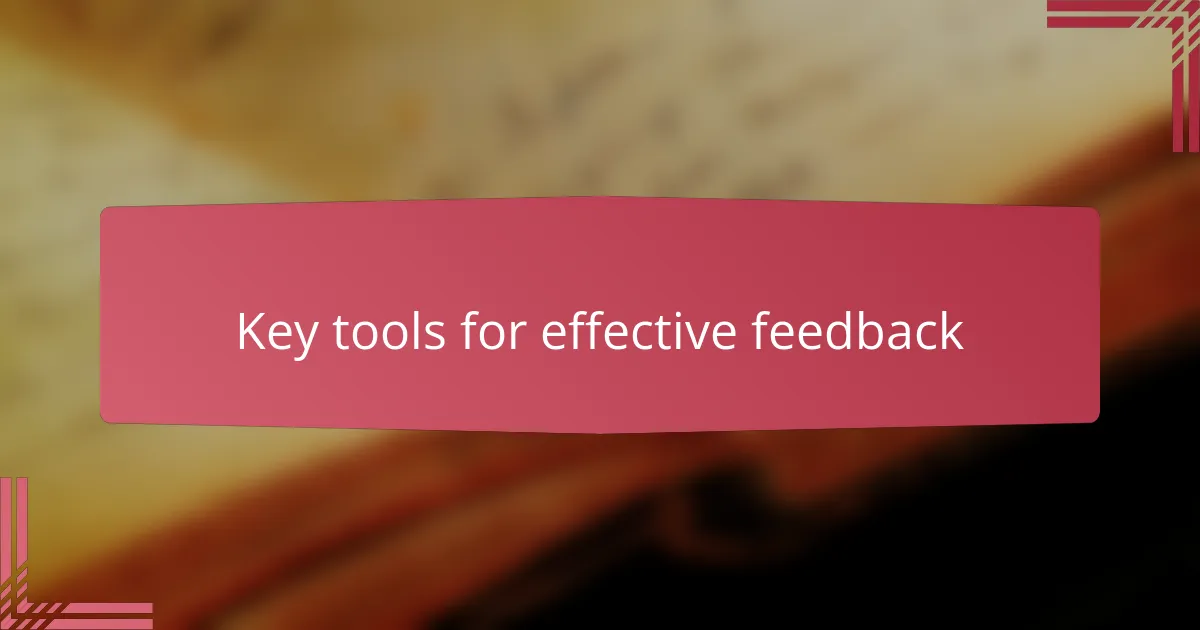
Key tools for effective feedback
When it comes to providing effective feedback, the right tools make all the difference. I found that Grammarly’s real-time suggestions help me catch those subtle grammar slips that can distract from the message. Isn’t it frustrating when you know the idea is strong, but small errors undermine your point?
Beyond just fixing mistakes, tools like Grammarly offer tone detection and clarity improvements that help shape feedback into something constructive and encouraging. I remember feeling more confident sharing my insights because the tool nudged me to phrase things in ways that students would actually absorb and appreciate. Have you ever noticed how the way feedback is delivered can either motivate or discourage a learner?
What truly sets effective feedback tools apart is their ability to save time without sacrificing depth. Grammarly’s instant reports let me focus more on the content of a student’s work rather than getting bogged down in surface-level errors. This balance has allowed me to engage more thoughtfully, which I believe is the heart of meaningful feedback.
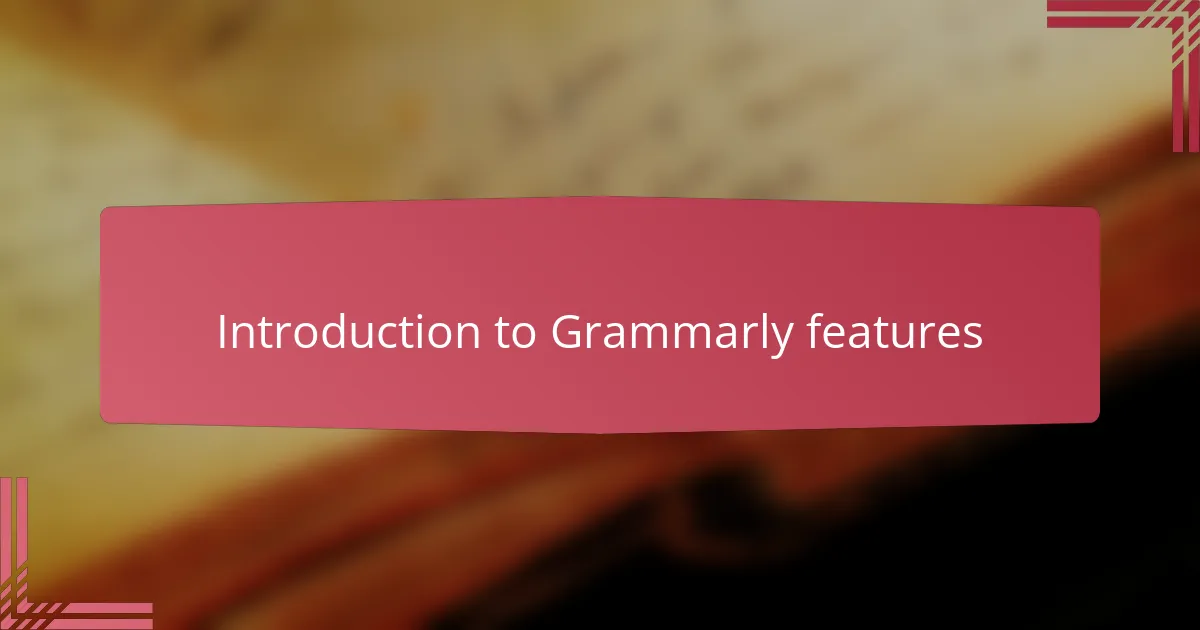
Introduction to Grammarly features
Grammarly offers a suite of features that go beyond basic spelling checks, and that’s what first caught my attention. I remember being pleasantly surprised by its ability to catch context-based errors—those little mistakes that spellcheck often misses. Have you ever reread a sentence only to realize it didn’t quite say what you intended? Grammarly helps avoid that kind of confusion.
One feature I found particularly useful is the tone detector. It made me pause and think about the emotional impact of my words. Giving feedback is tricky; you want to be honest but also encouraging. Grammarly’s suggestions often helped me strike that perfect balance, making my comments feel more supportive than critical.
Another aspect worth mentioning is the clarity suggestions. Sometimes, feedback can become overwhelming if it’s too wordy or complex. Grammarly nudged me to simplify my language, which made my feedback easier for students to understand. I guess it’s like having a writing coach beside you, reminding you to keep things clear and concise.
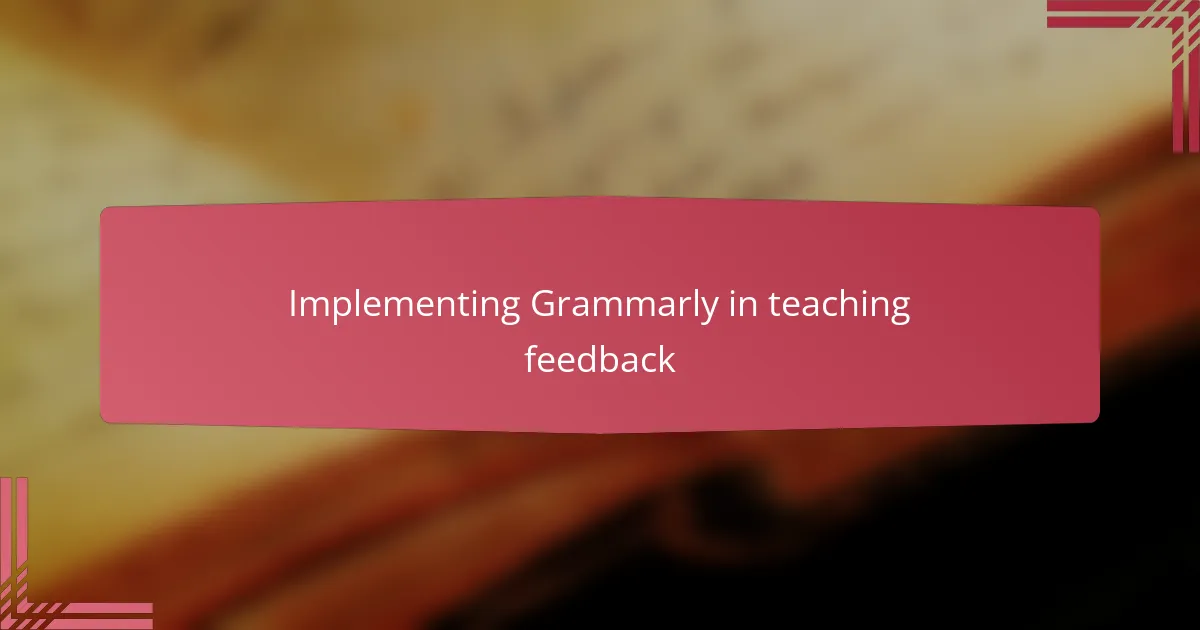
Implementing Grammarly in teaching feedback
Implementing Grammarly in teaching feedback transformed how I connect with students through my comments. I noticed that when I used Grammarly’s clarity and tone suggestions, my feedback felt less like corrections and more like genuine encouragement. Have you ever struggled to phrase critique without sounding harsh? Grammarly helped me find that middle ground.
At one point, I realized I was spending too much time hunting for small errors instead of focusing on the bigger ideas students were expressing. Using Grammarly freed me from that tedious proofreading grind, allowing me to engage more deeply with their arguments and perspectives. It’s amazing how much more meaningful feedback becomes when you’re not distracted by grammar nitpicks.
What really struck me was how Grammarly’s instant feedback gave me confidence to share constructive critiques that were both honest and kind. I recall a moment when a student responded positively to my remarks because of the supportive tone Grammarly helped me craft. That felt like a breakthrough in creating a trusting classroom atmosphere.
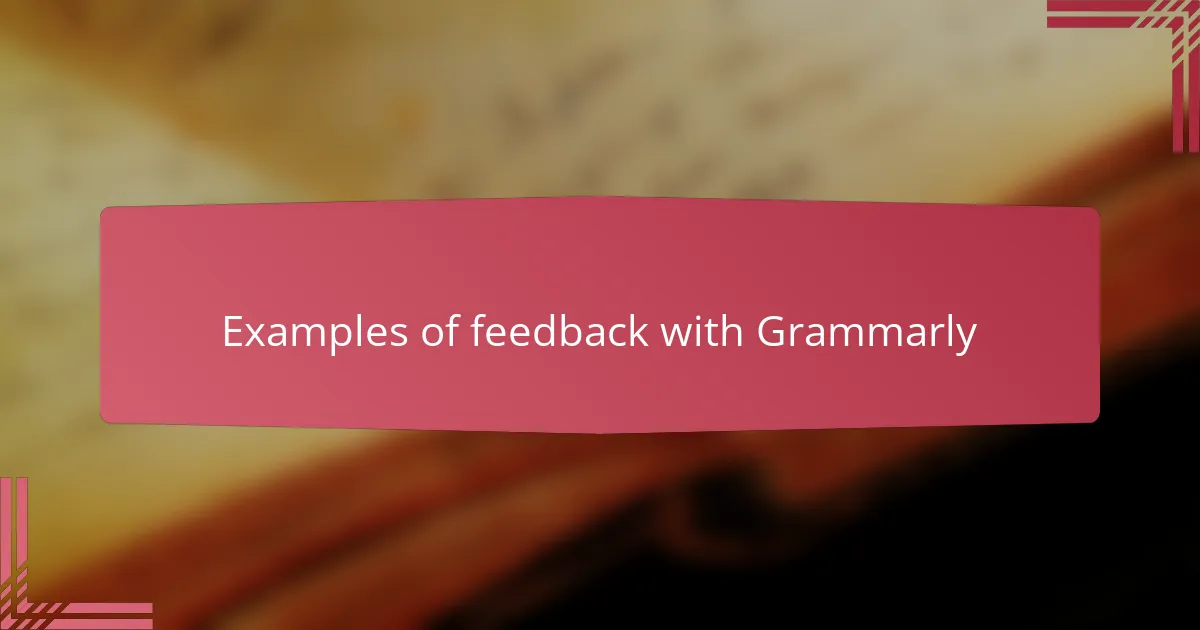
Examples of feedback with Grammarly
When I first started using Grammarly to provide feedback, I was amazed at how easily it helped me pinpoint unclear sentences or awkward phrasing in my comments. Have you ever left a note only to wonder if your message sounded too harsh or confusing? Grammarly’s tone detector stepped in like a friendly guide, ensuring my words came across as supportive rather than critical.
One memorable moment was when I gave feedback on a student’s essay where the argument was strong but the language a bit tangled. Grammarly suggested clearer alternatives, and I saw the student actually revise their work with fresh enthusiasm. It felt like a real collaboration, made possible because my feedback was both precise and encouraging.
Sometimes, the most valuable examples came from catching those tiny grammar slips that, without correction, could distract both the student and me. Grammarly saved me time by flagging these instantly, which meant I could focus deeper on the heart of the student’s ideas. This shift not only improved my feedback quality but also made the entire process feel less like a chore and more like a meaningful dialogue.
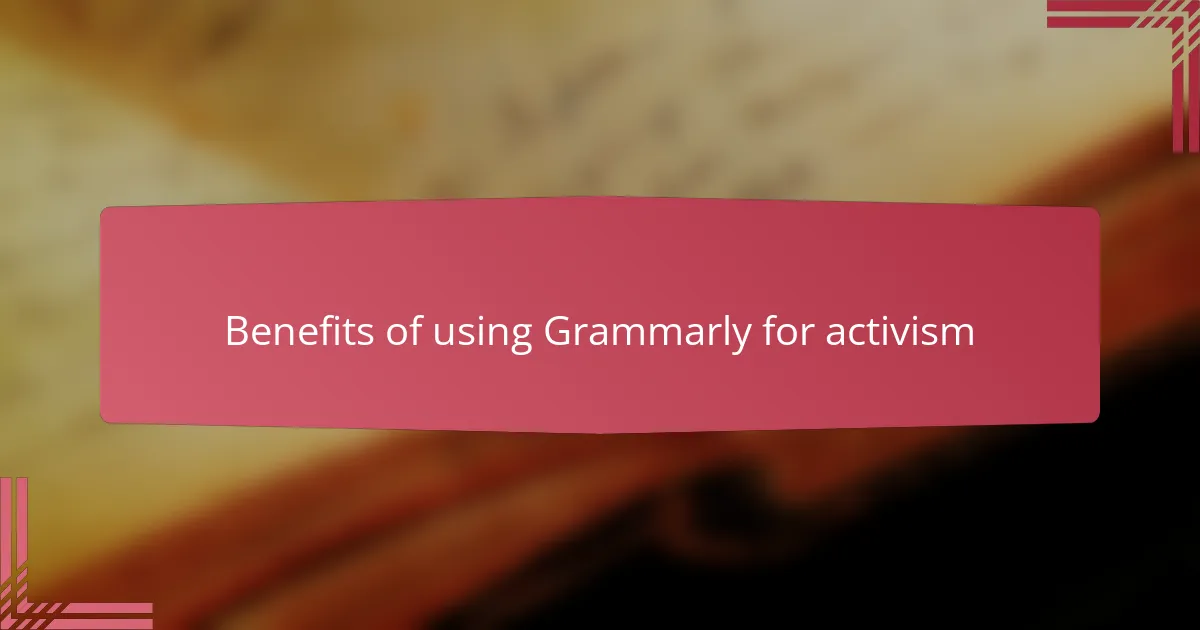
Benefits of using Grammarly for activism
Using Grammarly for activism has been a game-changer in how I communicate complex social issues clearly and confidently. Have you ever struggled to get your passionate message across because of small spelling or grammar errors? Grammarly catches those slips instantly, so your focus stays on the activism, not the mistakes.
What I appreciate most is how Grammarly’s tone detector helps me balance urgency with respect. Activist teaching touches sensitive topics, and I’ve learned to phrase feedback and messages in ways that invite dialogue instead of shutting it down. That gentle nudge toward thoughtful communication has, in my experience, made my advocacy feel more inclusive and impactful.
Another benefit I’ve noticed is time saved. Instead of obsessing over punctuation, I can dive deeper into the actual content and ideas I want to highlight. This shift means my energy goes toward empowering students and colleagues to think critically, which ultimately strengthens our collective voice in activism. Isn’t that what really matters?